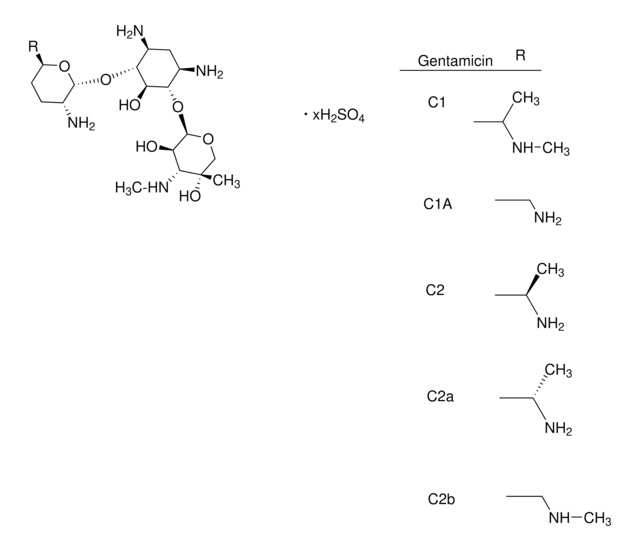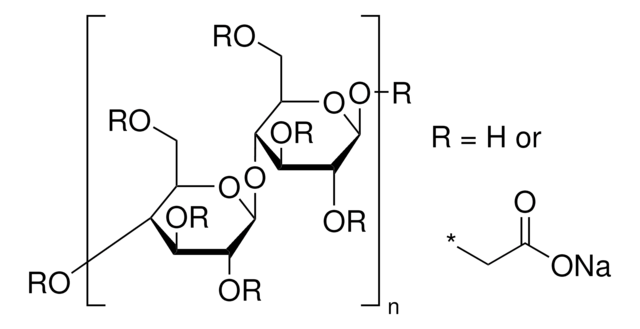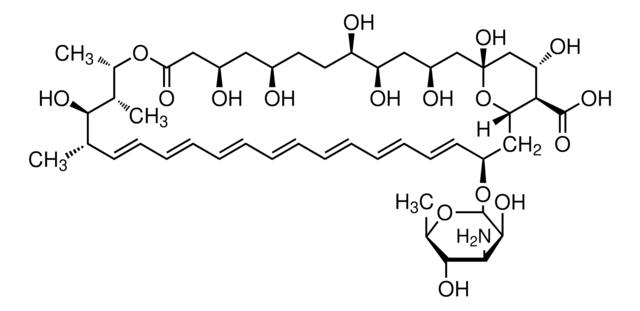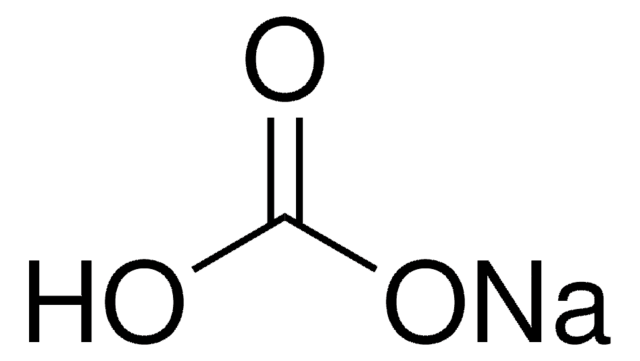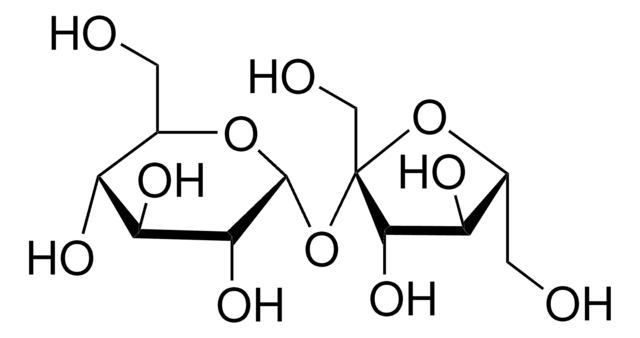G3632
Gentamicin sulfate salt
potency: ≥590 I.U. Gentamicin base per mg
Synonym(s):
GM Sulfate, Gentamicin C
About This Item
Recommended Products
biological source
Micromonospora purpurea
Quality Level
form
powder
potency
≥590 I.U. Gentamicin base per mg
≥590 units/mg Gentamicin
storage condition
(Tightly closed. Dry. )
concentration
50 μg/mL in H2O (is the recommended working concentration for eukaryotic cell culture)
color
white to off-white
antibiotic activity spectrum
Gram-negative bacteria
Gram-positive bacteria
mycoplasma
mode of action
protein synthesis | interferes
storage temp.
2-8°C
SMILES string
O=S(O)(O)=O.O[C@]1(C)[C@@H]([C@@H](O)[C@@H](O[C@@H]2[C@@H](O)[C@H](O[C@H]3O[C@@](CC[C@H]3N)([C@@H](C)NC)[H])[C@@H](N)C[C@H]2N)OC1)NC.O[C@]4(C)[C@@H]([C@@H](O)[C@@H](O[C@@H]5[C@@H](O)[C@H](O[C@H]6O[C@@](CC[C@H]6N)([C@@H](C)N)[H])[C@@H](N)C[C@H]5N)OC4)NC.O[
InChI
1S/C21H43N5O7.C20H41N5O7.C19H39N5O7.H2O4S/c1-9(25-3)13-6-5-10(22)19(31-13)32-16-11(23)7-12(24)17(14(16)27)33-20-15(28)18(26-4)21(2,29)8-30-20;1-8(21)12-5-4-9(22)18(30-12)31-15-10(23)6-11(24)16(13(15)26)32-19-14(27)17(25-3)20(2,28)7-29-19;1-19(27)7-28-18(13(26)16(19)24-2)31-15-11(23)5-10(22)14(12(15)25)30-17-9(21)4-3-8(6-20)29-17;1-5(2,3)4/h9-20,25-29H,5-8,22-24H2,1-4H3;8-19,25-28H,4-7,21-24H2,1-3H3;8-18,24-27H,3-7,20-23H2,1-2H3;(H2,1,2,3,4)/t9-,10-,11+,12-,13+,14+,15-,16-,17+,18-,19-,20-,21+;8-,9-,10+,11-,12+,13+,14-,15-,16+,17-,18-,19-,20+;8-,9+,10-,11+,12-,13+,14+,15-,16+,17+,18+,19-;/m110./s1
InChI key
RDEIXVOBVLKYNT-HDZPSJEVSA-N
Looking for similar products? Visit Product Comparison Guide
Related Categories
General description
Application
- in the research of the effectiveness of antibiotics against different bacterial cultures
- in the research of neuronal signal processing
Biochem/physiol Actions
Antimicrobial spectrum: Includes Gram-negative and Gram-positive bacteria, including strains resistant to tetracycline, chloramphenicol, kanamycin and colistin, particularly strains of Pseudomonas, Proteus, Staphylococcus and Streptococcus.
Features and Benefits
Components
Storage and Stability
Other Notes
signalword
Warning
hcodes
Hazard Classifications
Skin Sens. 1
wgk_germany
WGK 2
flash_point_f
Not applicable
flash_point_c
Not applicable
ppe
dust mask type N95 (US), Eyeshields, Faceshields, Gloves
Choose from one of the most recent versions:
Certificates of Analysis (COA)
Sorry, we don't have COAs for this product available online at this time.
If you need assistance, please contact Customer Support.
Already Own This Product?
Find documentation for the products that you have recently purchased in the Document Library.
Customers Also Viewed
Our team of scientists has experience in all areas of research including Life Science, Material Science, Chemical Synthesis, Chromatography, Analytical and many others.
Contact Technical Service